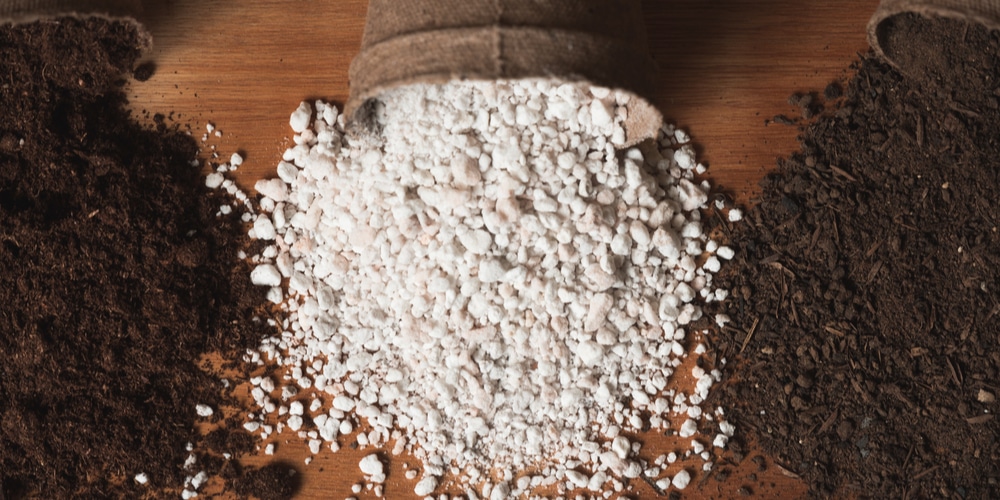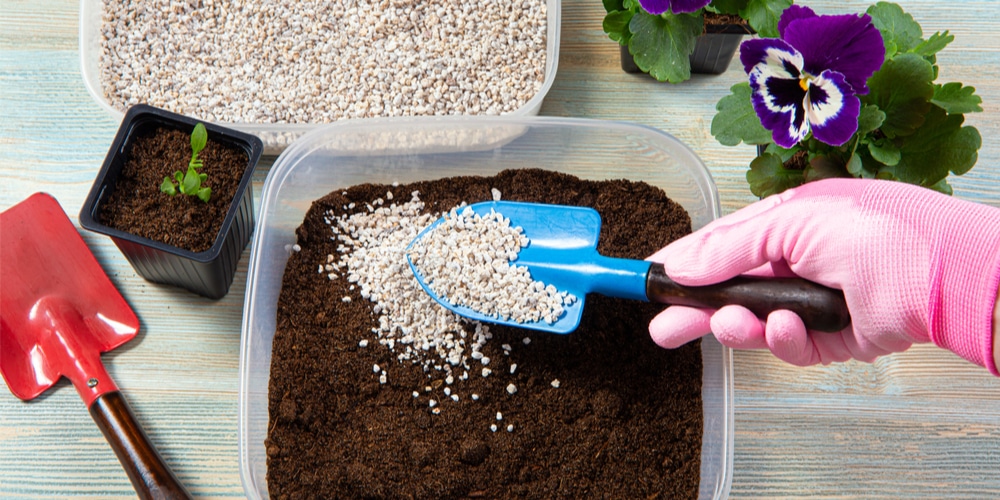Have you recently noticed your soil’s perlite turning green and wonder what’s going on?
Perlite, soil, and other growing mediums for plants can turn green for a number of reasons, including overwatering and the presence of algae. Let’s discover the causes and what you can do in the future to prevent this from happening.
Perlite Turning Green – Should I Be Worried?
Potting mediums such as garden soil, perlite, and others can take on a green hue and alarm growers and plant enthusiasts. You’d immediately think that it’s detrimental to your plant’s health, but the good news is that it’s most likely not. Do not panic. The discoloration isn’t something to worry about.
If your plant still ‘looks’ normal, sports healthy green foliage, and has new leaves and shoots, then it’s probably okay. However, you’ll need to address the reasons why your garden soil or perlite is turning green, which we’ll cover below.
Reasons Why Perlite Turns Green
It’s Algae
Algae forms on surfaces that are constantly wet and get a lot of light. It could grow on virtually any surface, including the top perlite layer of your potted or container plant.
Gardeners often see this phenomenon when growing seedlings under grow lights. It meets three conditions that algae love- bright light, a moist environment, and warmth. Algaes thrive in temperatures between 68 to 86 degrees F (or 20 to 30 degrees C) and areas that get more than 8 hours of light.
Once algae get to the perlite medium it’s only a matter of time before the organism covers the entire surface of the soil.
Algae might interfere with watering and prevent it from getting to your plant’s roots. It can also take in nutrients from the soil that was intended for your plant. However, it’s relatively easy to treat green algae on perlite.
To remove algae from your soil and pots you need a strong jet of water or two, as well as soapy water and a sponge. Alternatively, you can scrape the top layer of your soil and dispose of it, then replace it with a fresh batch of perlite or potting mix.
You can also withhold watering and allow the top inch of the soil to dry out, which can slow down algae growth and eventually kill them. If you wish to remove the green from your perlite quickly then you can decrease the amount of sunlight or grow light your plants are getting.
You’re Watering Too Frequently
Algae thrive in moisture and wet areas. The green in perlite is most likely the result of overwatering, or in this case, watering too frequently and not allowing the soil to dry out.
Most plants won’t need daily watering, and they may suffer from root rot when you overdo it. As a general rule of thumb, you can feel the top of the soil before you reach for the watering can- if it’s moist, your plant won’t need water and you can skip the process.
Green perlite can also mean that the soil isn’t well-draining. Water might collect and stay at the soil’s surface longer than it should, thus inviting algae and other organisms that love moisture to live there. Aside from halting too much watering you should also inspect the soil and amend it as necessary.
Cut back on watering and soon your perlite will return to normal.
Related Article: Perlite vs Vermiculite

